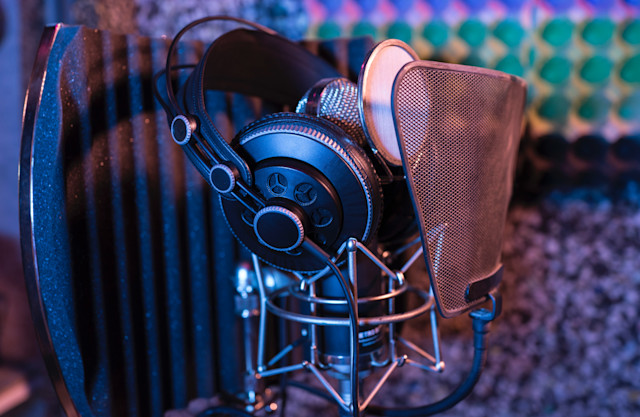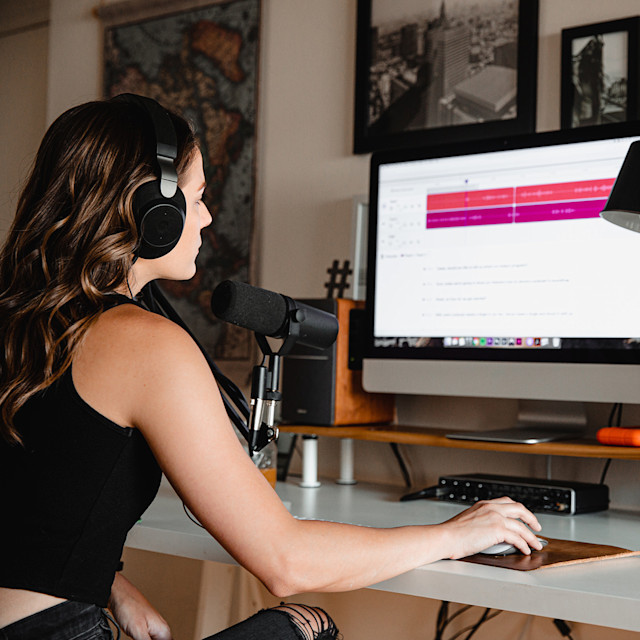Gain Staging for Beginners - How to Clean up Your Mixes
June 18, 2024 - No more muddy mixes! Learn beginner-friendly gain staging to achieve crystal-clear audio & take your music production to the next level.

At the heart of audio production, gain staging stands as a fundamental building block for achieving crisp, captivating mixes.
For beginners, this concept can seem like a technical enigma, a maze of unfamiliar controls and terms. But fear not, sound adventurer, for this journey will guide you down the paths of Gain Staging, transforming you into a master mixer.
A Brief Historical Review: The Roots of Gain Control
The concept of gain staging has its roots in the early days of analog audio recording. In the recording studios of the 1960s and 1970s, sound engineers used analog consoles and outboard equipment that required careful management of signal levels to avoid unwanted distortion and noise.
These engineers relied on VU (Volume Unit) meters to monitor signal levels and ensure that each stage of audio processing maintained optimal sonic integrity.
With the advent of digital recording in the 1980s and 1990s, the principles of gain staging moved into the digital domain. Although the tools and equipment have changed, the need to properly manage signal levels remains crucial for high-quality mixes.
Learn how to gain stage vocal recording in this Soundtrap tutorial.
What is Gain Staging?
Keep in mind that Gain Staging is not the level you give to each channel of your mix via the faders, as this tool will be used later to adjust the volume of each track in your overall mix, this is a separate process that is recommended to be applied in the first steps of your mixing process.
In simple terms, gain staging refers to the process of managing audio signal levels throughout the entire processing chain, from the initial recording to the final mix. The goal is to ensure that the audio signal is at an optimal level at each stage of processing, avoiding both distortion from overload and noise from signals that are too low.
Think of it as a tap that regulates the flow of sound from each instrument or voice before adding it to the mixing pot.
Why is it essential to master Gain Staging?
1. Avoid Unwanted Distortion: When a signal is too high, it can cause digital or analog distortion, depending on the equipment or software you are using. This distortion is often unwanted and can ruin the quality of your mix.
By not adjusting the gain of a signal correctly, it will be difficult to process, you will be limited, or, you will be forced to use processes that are not necessary to adjust the gain again after a processing chain or even have to start over.
2. Better Signal-to-Noise Ratio: Too low a signal can lead to increased background noise (noise floor) when amplified, affecting the clarity of your mix.
3. Preserve Dynamics: Maintaining proper signal levels allows the elements of your mix to maintain their natural dynamic range, avoiding excessive compression and loss of detail.
4. Improve Clarity and Definition: A mix with a well-adjusted stage gain will sound sharper and more defined, as this adjustment will be reflected in how you process your signal and the final result, allowing each sonic detail to shine with its own light.
Keep in mind that as one of the first steps in your mix, this will be a cornerstone for the rest of the processing you do to your mix.

Basic Steps for Good Gain Staging
1. Set Proper Recording Levels
Make sure your input levels are neither too high nor too low. A good starting point is to aim for peaks between -18 dB and -12 dB on your DAW (digital audio workstation). This gives you a safety margin to avoid distortion.
Likewise, these values depend on the individual recording engineer and his or her experience with the equipment used for recording.
I recommend adjusting the gain of your recording in the section of your song that has the most energy. Likewise, you can adjust this value if you need to.
Step by Step:
Set up your Microphone or Instrument: Adjust the preamp gain so that the input levels in your DAW peak between -18 dB and -12 dB.
Monitor in Real Time: Use your DAW's meters to monitor levels as you record.
Adjust as Needed: If you find that levels are too high or too low, adjust the gain on the preamp.
2. Adjust the Levels in the DAW
Once you have recorded your tracks, check the levels of each track. Keep the mixer faders in a neutral position (usually at 0 dB) and adjust the individual gains of each track to make sure they don't overdrive.
This is a very important step, I recommend that when adjusting the signal of all your tracks, they should have a not-too-high peak level at the moment they arrive at your Mix bus, all with the objective that you have room for the increase in levels that you may have when processing your signals throughout your mix and you don't have to struggle with level problems in your Master bus.
3. Control Gain in Effects Processors
Every plug-in or effects processor can alter the level of your signal. Make sure that the signal going in and out of the plug-in is balanced. Many plug-ins have input and output meters that you can use for this purpose.
Remember also that the most important tool you have is your ear, although the meters are a reference that will help you a lot, your ears should be able to recognize if you are having any problems with your mix, this will make the mixing process more efficient and you can truly focus on improving the sound of your mix.
Every plug-in or effects processor can alter the level of your signal. Make sure that the signal going into and coming out of the plugin is balanced. Many plugins have input and output meters that you can use for this purpose.
Step by Step:
Insert the Plugin: Add the effect or processor to your track.
Check Input and Output Levels: Use the plug-in's meters to make sure that the input and output signal have similar levels.
Adjust as Needed: If the output signal is higher or lower than the input signal, adjust the plug-in's output gain control.
4. Check the Mix Bus
Your mix bus (or master bus) should also have adequate levels. During mixing, make sure that the overall level does not get too close to 0 dBFS (decibels full scale), leaving a margin of between -8 dB and -6 dB for the mastering process.
5. Use Headroom
Headroom is the space between the highest level of your signal and the point where distortion occurs. Maintaining good headroom is essential for a clean mix. Always leave a safety margin to avoid unexpected peaks that can cause distortion.
It is true that there comes a point when you are so focused on processing your mix, processing some signal, that you forget to check certain details that are important, but it is necessary to monitor them from time to time.

Recommended Tools
To master gain staging and ensure a flawless mix, it is vital to have an arsenal of tools and follow certain practices. Here are some of the most essential ones:
Use of Trimmers and Gain Plugins.
Fine Tuning:
Trimmers and gain plugins are simple but effective tools for fine-tuning signal levels. Use them to make initial adjustments and during processing to maintain proper signal balance.
You can also adjust gain directly on the audio clip as an initial adjustment.
Level Control:
Constantly check and adjust input and output levels using trimmers to ensure that each processing stage is receiving and delivering optimal levels.
Keep in mind that this change will affect the level at which the signal enters your processes, so if you insert a trimmer or gain plug-in before any process such as a compressor after previously setting it to a different signal level, its response will be different and you will have to set it again.
Use of Compressors
Taming Unexpected Spikes:
Compressors are your best friend when it comes to controlling those unpredictable peaks that can ruin a mix. Adjust the threshold and compression ratio to smooth out the peaks while maintaining the naturalness of the sound. Use compressors with gentle settings to maintain natural dynamics, and more aggressive for signals with a lot of variability.
Maintain Stability:
Adjust the attack and release time so that the compressor responds appropriately to the characteristics of the sound. A fast attack controls abrupt transients, while an appropriate release maintains sustain without cutting off the natural flow of the signal.
Use of Equalizers
Elimination of Problem Frequencies:
Equalizers are essential for cleaning the signal of unwanted frequencies that can increase background noise. Use high-pass and low-pass filters to cut out unnecessary extreme frequencies and EQ bands to attenuate problematic resonances.
Enhance Clarity:
Adjust key frequencies to enhance the clarity and presence of each element in your mix. This not only improves sound quality, but also makes it easier to manage gain levels.
Use of Limiters
Distortion Prevention:
Limiters are essential to prevent extreme peaks from causing distortion or damage to equipment. Set the limiter threshold just below the distortion level to maintain a clean, controlled signal.
Ensure Consistency:
Applies limiters on the mix bus or individual tracks to ensure that signals do not exceed desired levels. This is especially useful in live environments where dynamics can be unpredictable.
Additional Tips
Use the Meters: Trust your ears, they are your main tool when mixing, but also trust your DAW's visual meters. They will give you an objective reference of your signal levels.
Monitor on Different Systems: Listen to your mix on different speaker systems and headphones to make sure it sounds good in any environment.
Apply Saturation in Moderation: Saturation can enhance your mixes, but use it sparingly to avoid unwanted distortion.
Use Smart Compression: Set your compressors and limiters to control peaks without negatively affecting the dynamics of your mix.
Maintain Consistency: Try to maintain consistent gain levels throughout your project to avoid problems in the final mix.
Conclusion: A Continuous Journey to Sound Mastery
Scene gain is an essential skill for any audio producer aspiring to create professional mixes. With practice, patience, and the above tips, you'll be well on your way to mastering this art and achieving mixes that captivate your listeners.
Remember, this is an ongoing journey, a process of constant experimentation and learning - embark on this sonic adventure and discover the power of scene gain to transform your mixes into masterpieces!
About the author
Odiseo is a music producer and mixing and mastering engineer with experience ranging from music creation as a session and concert musician, beatmaker, live sound engineer, and recording engineer, to audio production for short films, providing a broad perspective on technical concepts and musical skills to take music to another level.
Beginnen Sie noch heute mit Soundtrap!